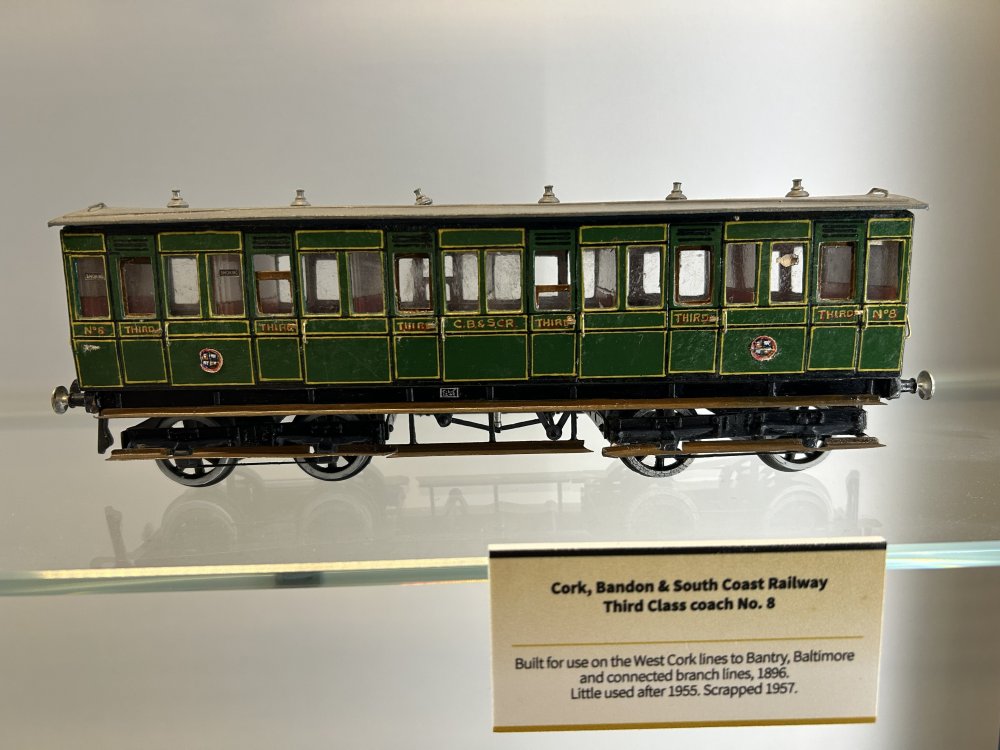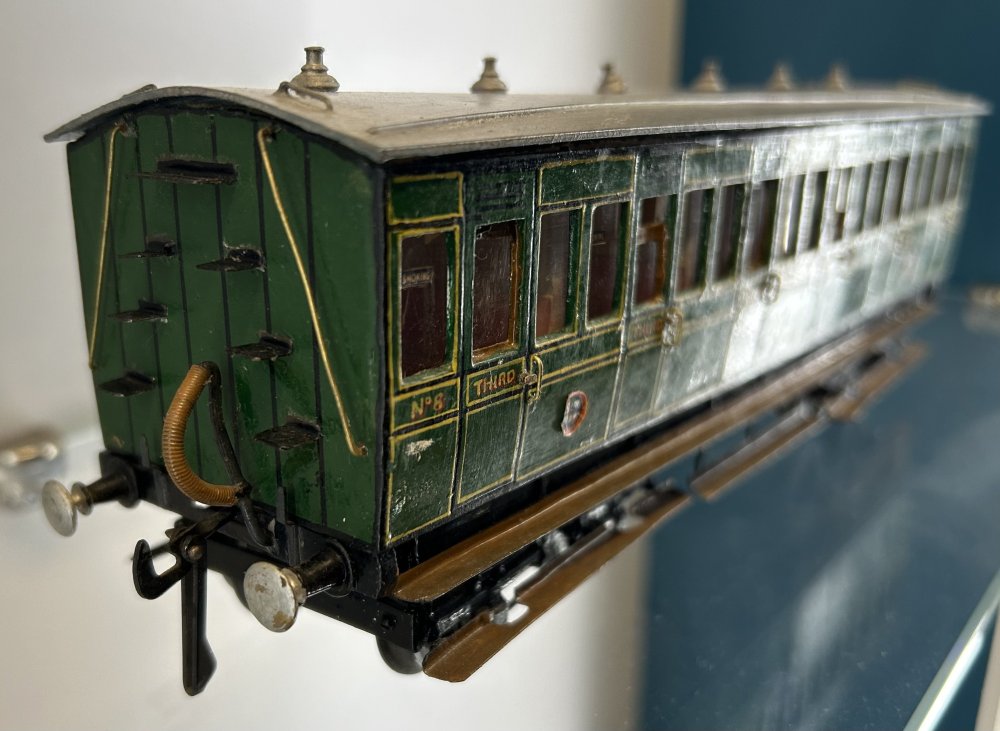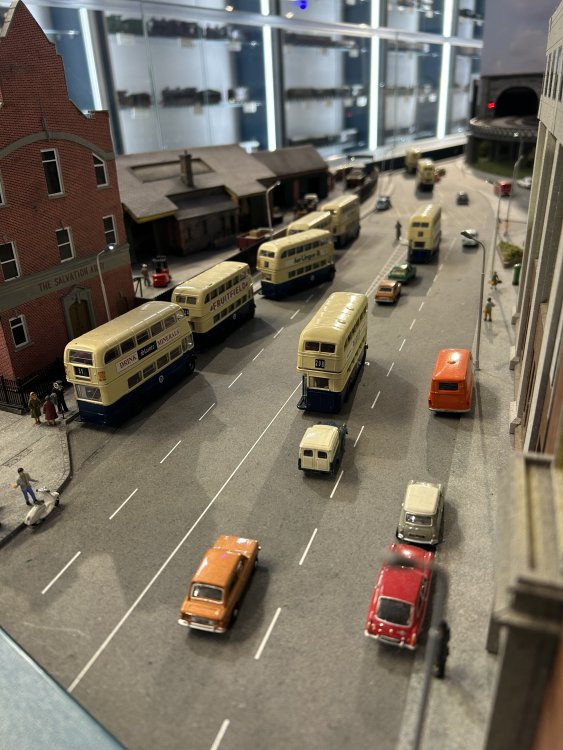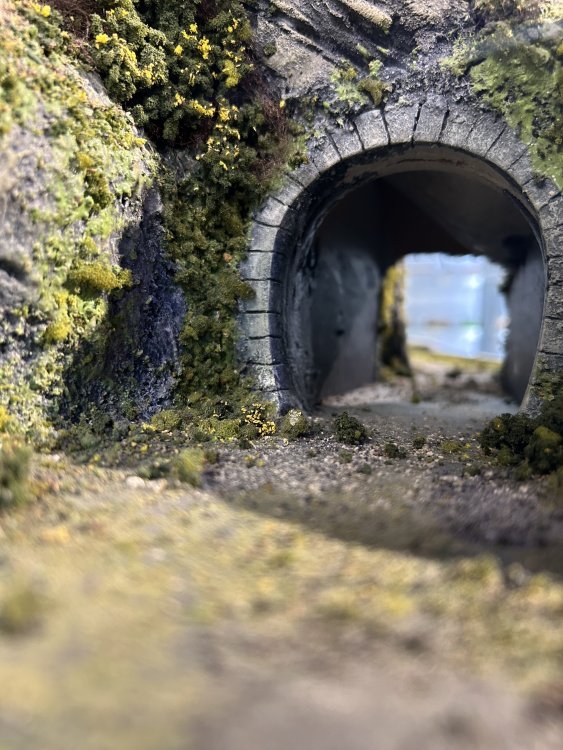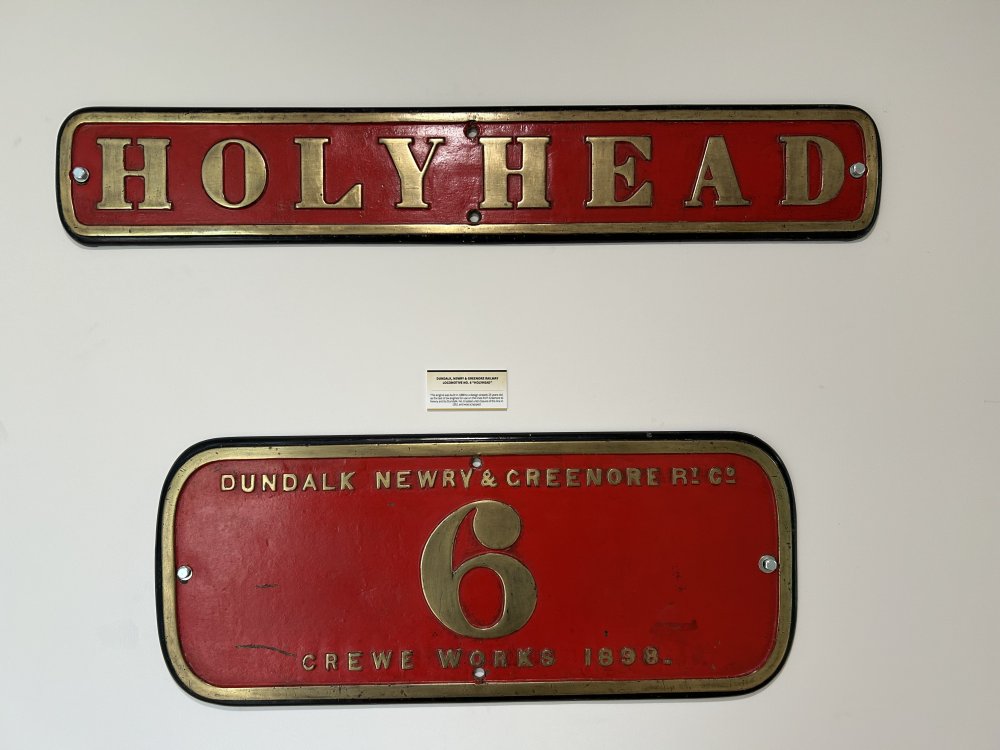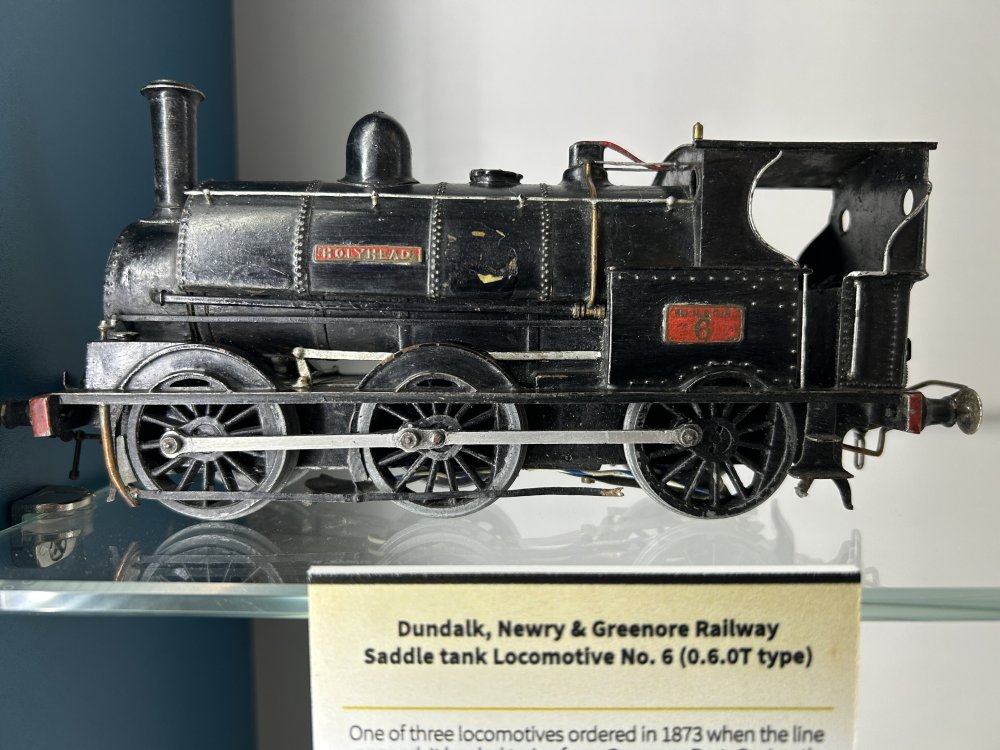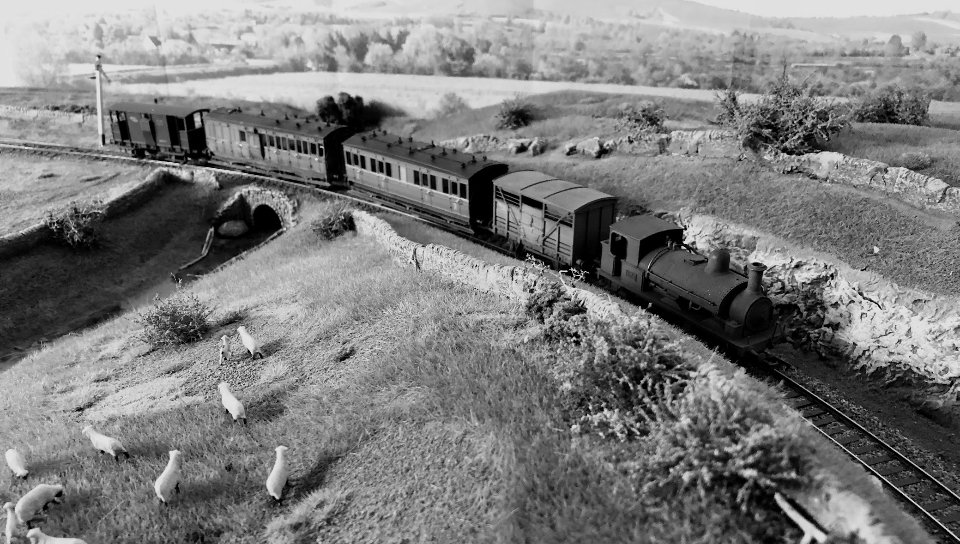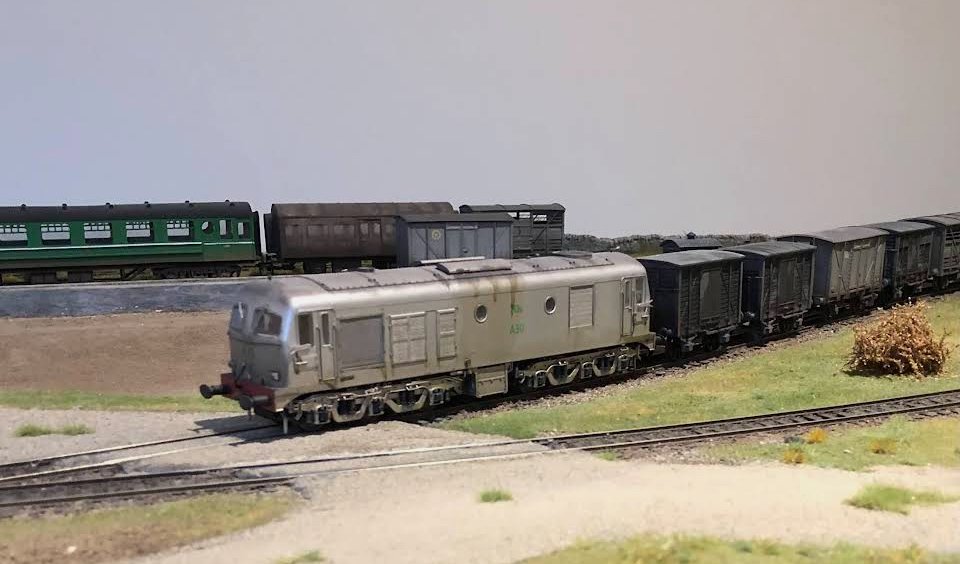-
Posts
15,915 -
Joined
-
Last visited
-
Days Won
394
Content Type
Profiles
Forums
Events
Gallery
Blogs
Community Map
Everything posted by jhb171achill
-
OBB HOe layout "Connafeld"
jhb171achill replied to Georgeconna's topic in Continental European Modelling
Extra marzipan on my cake, please............ -
More from Malahide Railway Museum. The Mk 4 for Cork has a fault in its satnav, so it’s heading for Wicklow instead…. IMG_3671.mov Also crossing the Liffey…. IMG_3670.mov
-
I do know that one of his LLSR relics - a coach transfer monogram - went for a walk....
-
In one photo of his layout in his home, part of what looks like a Bandon Tank can be seen, partially obscured, so he MIGHT have had one. There is - strangely - no record of him ever having had any J15 - maybe he thought them too “ordinary”. Not the nearest equivalent, the Midland J18. It’s known that he retained a very small few models and gave away a few - were looking at a dozen maximum. His daughter, now 90, retains about 5 or 6 locos, mostly LMS. It is thought that distant family members have 1 or 2 more.
-
What is often strange about the Fry collection is the omissions. His daughter, now about 90, retains ownership of about half a dozen of his models, but there’s no Bandon tank anywhere - yet, he made a single Wisht Caark model; a coach. In CBSCR livery, too (though the green is far too light). IMG_3674.mov IMG_3676.mov IMG_3673.mov
-
-
OBB HOe layout "Connafeld"
jhb171achill replied to Georgeconna's topic in Continental European Modelling
Outstanding, George! Love this layout! -
Dugort Branch back in the day - tank loco 472 heads “up to town” in July 1956, and A30 pulls into the goods yard in 1959. The branch train awaits at the platform behind it. A wheezing Crossley “C” will do the honours today.
-
Looks almost like a trial run of one of those new white "darts"....! (Battery darts - Barts??)
-
But you're in the wrong livery, wrong gauge, and the wrong scale, and you've no DCC. Calling Mr. Dempsey, of this parish!
-
As always.....................WOW!
-
Absolutely BRILLIANT news - very well done to all.
-
Both sold now - thanks for looking.
- 1 reply
-
- 2
-

-
Clogherhead - A GNR(I) Seaside Terminus
jhb171achill replied to Patrick Davey's topic in Irish Model Layouts
Beautiful!! -
Irish Railway News ‘Enterprise Watch’
jhb171achill replied to IrishTrainScenes's topic in General Chat
Gawwwd. Wanted to take the grandson on a DD set tomorrow as far as Drogheda and back. Anyone know if there is the slightest chance that any normal DD service will be operating? -
https://www.studio-scale-models.com/Brake30.shtml I have two of these kits untouched, unopened, for sale. I paid €50+ for the two including postage. Will sell for €25 each or €48 for both, imcluding postage to anywhere in Ireland or the UK.
- 1 reply
-
- 2
-

-
Tis a bit wild right now in the Republic of Malahide. Don't stand too near to any tree, that's for sure! Bits flying off them left right and centre........
-
Irish Railway News ‘Enterprise Watch’
jhb171achill replied to IrishTrainScenes's topic in General Chat
Well, the other day when i went north, the DD was a 6-car NIR railcar. No matter, thought I; I'll be sure to get a DD back tomorrow. Sure enough - the following day the 16:00 DD was a THREE-car NIR set, with no working internet. -
Yes and no. My own recollections, and those of others, are of all-over spray. I certainly saw H vans, palvans, and also on one occasion one of those outside-horizontal-planked GSR vans newly painted, and they had brown roofs. However photo evidence shows up very clearly what is one of three possible things: 1. Wagon resprayed brown, but not the roof. Unlikely but possible. 2. Some wagons WITH grey roofs - though a lot darker than in the artists' impression of the model. 3. Possibly painted brown, but weathered so badly (like CIE grey or CIE green steam engines, red CDR loco domes and blue GNR domes) that it was impossible to tell what actual paint colour was under the dirt. (2) and (3) are the most likely, but all-brown was very definitelt there too - I saw it myself. I'll be ordering some, as they look amazing. When I do, I will take a very deep breath and try to pluck up courage to get them weathered. The roof will be first! IN traffic, the rich brown tended to "flatten" quite quickly. The heavy marine ply the sides were made of didn't take well to weathering.
-
Macmine would be an amazing one!!
-
If I had the time and money and space to build and equip every layout I've ever planned, sketched out, or doodled or dreamed up, and I'm sure i do two or three a day - put together, they'd be seen from outer space! I once concocted an imaginary system in my head. I wondered how many people it would need to operate it, so I sketched it out to see. The answer was that it would take an absolute minimum of maybe 40 people to operate it fully!
-
The brown livery started appearing about 1970; precise date of first one is not recorded anywhere. However, even six years later when the last loose-coupled goods train ran, a good quarter of the wagon fleet overall were still grey. As late as 1975 I saw a "H" van at Ballina in the Crossoolina siding still with a "flying snail", thus, it hadn't seen a paint brush since 1963. It's quite possible it was satill carrying its first and only coat of paint. You can practically date a photo - all grey is pre-1970. Early seventies, and a very occasional pristine brown one. gradually, 1973 its maybe 50 / 50, and by '76 only an occasional grey one.
-
Hopefully
-
ALL of the above posts make perfect sense; thus adding strongly to my predictions and beliefs that: 1. The Foynes branch is, was, and will be a white elephant. There is no traffic for it, never was, and won’t be. It’ll gather weeds and end up being cleared of bushes every few years by a yellow machine. 2. Bar Ballina - for the time being anyway - rail freight on this island will go the way of steam engines and loco-hauled passenger trains. (Sorry, “customer” trains). 3. The hoo-ha about the rail development plan is largely a load of fantasy nonsense concocted to suggest that politicians north and south are serious about LONG term public transport planning. They aren’t, and even if they were, large parts of this report are unrealistic drivel that a first-year economics student could debunk. 4. Ideas about reopening Rosslare - Waterford, Bandon or the Derry Road are not going to happen, full stop. Sorry to be negative, but these - plus points raised above - are the cold, hard realities in Ireland.
.png.c363cdf5c3fb7955cd92a55eb6dbbae0.png)



